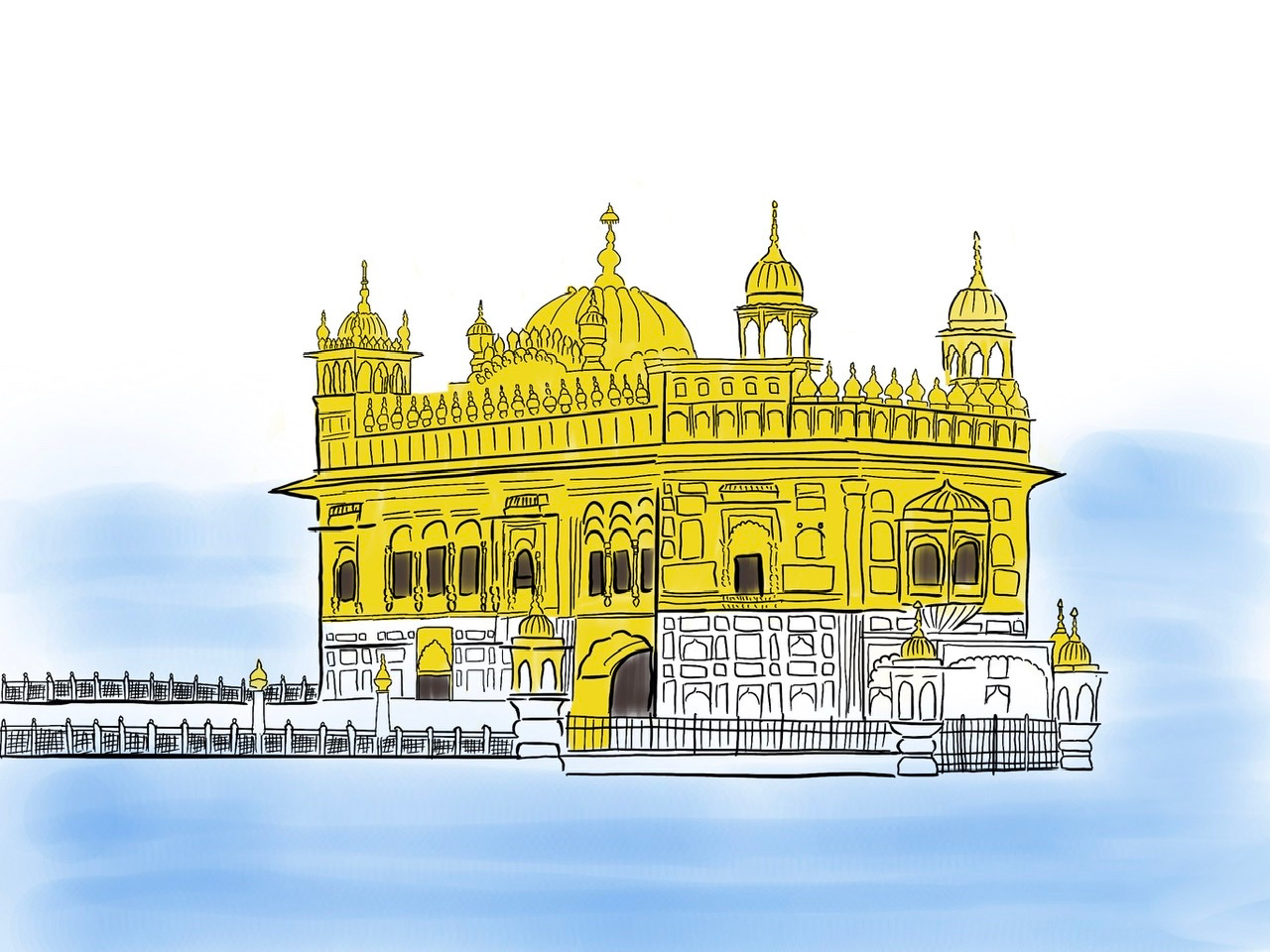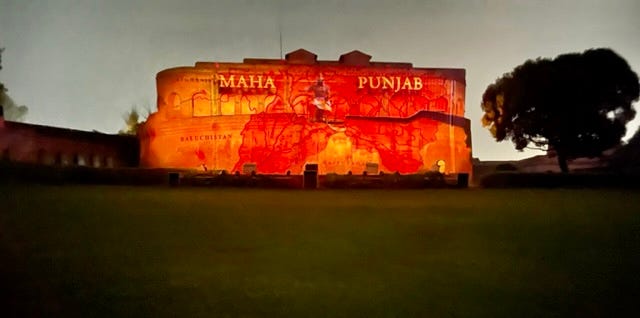This week I visited my hometown, Amritsar.
Amritsar is an aged old city, founded in 1574 AD, on the banks of a holy pond from which it got its name (Amrit means ‘holy water’ and sar means ‘reservoir’).
I was born and brought up in Khalsa College. My grandfather was the head of the Botany Department there for more than two decades. He was provided an accomodation, on campus, a large banglow style home. I was born there. My mother was a teacher in the Khalsa School for Girls. Years later, both my brother and I studied in the same college.
Khalsa College was established by Maharaja Ranjit Singh, about 126 years ago and is one of the oldest educational institution in the region. It’s majestic building portrays Mugal and Victorian architecture. My grandfather photograph is still hanging on the wall of the Botany Department.
We arrived in Amritsar there before mid-day and stayed with a friend who is like a younger brother to me. After settling in and having lunch, we embarked on exploring my city.
I left Amritsar in 1984. Every time I go back my first reaction is - everything is so familiar. I can recognise landmarks, find my way to my favourite shops, and intimately every nook and corner. But my second reaction is - so much has changed. So many building that were the pride and joy at my time are deteriorating, other have been knocked down. The city that had only one bridge how has several fly-overs. Several high-rise buildings are cluttering the skyline where there used to be clear skies and green fields.
On the first day, we went to see the Gobindgarh Fort. Spread across 43 acres, right in the heart of the city, this magnificent fort had a history of 257 years. Yet, only recently, it has come to limelight. Only few years ago it was restored and opened for tourist.
We learned the history of the fort from the Light and Sound show in the complex and story of Maharaja Ranjit Singh (the illustrious ruler of Punjab) in a 3D movie theatre within the fort.
It was from the treasure of Maharaja Ranjit Singh, stored in this fort, that the British took the Kohinoor diamond.
Following the fort, we visited the Golden Temple. Golden Temple is the most revered shrine of Sikhs. It’s construction was completed in 1577 by Guru Ram Das, the fourth Guru of the Sikhs. One interesting fact to note is that the whole temple complex is below the ground level. Built in the middle of sarovar (reservoir), you go down appox fifteen steps to reach the outer parikarma (periphery) of the shrine.
Golden Temple gets more overseas tourists than the Eiffel Tower (18,000) and Taj Mahal (25,000). But overseas visitor numbers are a fraction of the local and religious visitors. On an average, more than a hundred thousand people visit the temple on daily basis. On weekends and for religious occasions, the number increases to 150,000 - 200,000, per day.
The temple was destroyed several times by the Mughal and invading Afghan armies was rebuilt several times. In 1809, after founding the Sikh Empire, Maharaja Ranjit Singh got it rebuilt it in marble and copper. Then in 1830, he got the sanctum overlaid with gold. This has led to the name the Golden Temple.
After the temple, we visited, one of the must visit place in Amritsar - Kesar-ka-dhaba. A street-food joint in a narrow lane of the inner city is a place where people don’t mind to queue for hours. Thankfully our host had connection with the owner and had a table reserved for us. The laccha parantha (7 layered parantha) we ate tasted the same as it did four decades ago.
and cucumber and onion salad.
The next day we went to visit the boarder with Pakistan. Each dusk, an elaborate lowering of the flag ceremony takes place (both in India and Pakistan) attended but thousands. The atmosphere was electric. Patriotic songs were being played on both sides. A Boarder Security Force (BSF) solider was working the crowd.
We were escorted by a BSF officer to the venue and got the super VIP treatment which included the visit to BSF museum, front row seats to the ceremony and photo opportunity with six-feet tall BSF troopers after the parade.
I also visited my street to see my old home. It was not there. In its place was standing a new three story house. I had a mixed feeling about it. The old street felt strangely familiar. The air smelled the same. The sky was the same still interrupted by electricity and telephone wires. Yet, something was missing. The life had moved on. Next generation had demolished the old and built multi-story new houses.
As I stood there reliving the past, a young man passed us by on a scooter. After seeing me talking to dhobi (the man who used to iron our clothes), he stopped and asked who I was.
“She is Rai Sahib’s daughter,” said the ironing man.
He got of the scooter and touched my feet. “Your father was my father’s friend,” he said. “He used to often come to our house often.”
It had been 14 years since my father left that street, and 4 year since he passed away, still people know him. People still know my grandfather in Khalsa College, five decades after he left it.
Will anyone remember me, once I am gone?
Having migrated to another country, I don’t think so. This is the price the migrants have to pay to leave their roots.
My roots are here in India, my truck is in Australia, and my branches are spreading in Europe. No one will stop by to tell my daughters that they knew their mother if they happen to visit their old street.
Today’s newsletter is one day late. It is because I am on vacation from 23 August to 14 October.
During this time, I am writing about my travels. Please keep your comments coming they encourage me to keep writing and tell me what resonates with you.
When I get back, I will run another one of my Write Your Book In 30 Days course, the last one for 2022. It will start on 25 Oct and end on 29 Nov. If you are interested, register your name here.
That’s all from me this week.
If you liked this newsletter, please consider becoming a paid subscriber.













Wow, isn’t the Golden Palace stunning, and my mouth watered seeing that Parantha, and what a feeling it would be to be back in your home town and meet up with people you knew and who knew your father. ❤️
Wow, Amritsar sounds like a beautiful city. And your grandfather was a botanist! I'm originally a botanist by training, although I no longer work as a botanist these days. Coming from a mix of cultures, all of whom migrated to result in me being a New Zealander, I get what you mean about the loss of those place-based connections with people. Bittersweet as Sue says